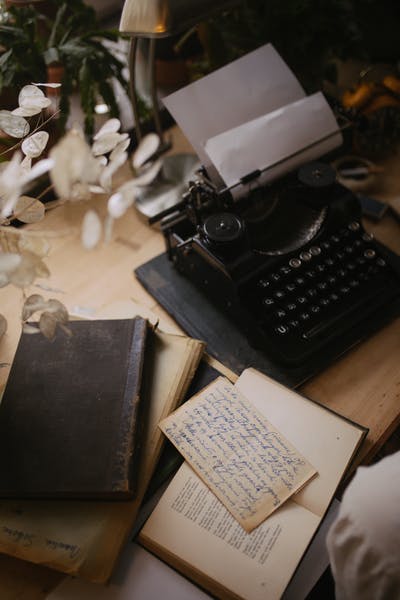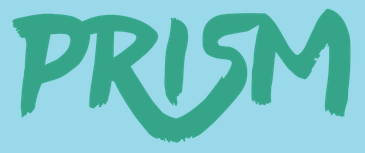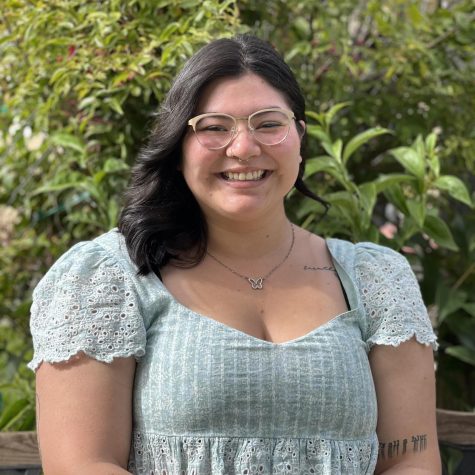How to: Poetry

August 28, 2022
As we get closer to the start of the school year, we are arriving at an exciting time, Prism submissions!!! Submissions are now open to students for the 2022-2023 school year. If you were not aware, Prism accepts art and literature submissions from art, poetry, prose, music, films, photography, plus many more. As submissions are now open, we wanted to share guides on how to get started, especially for those who want to share but don’t know where to begin. This week’s how-to is to explain how to create a poem.
A poem is a type of literature that can portray a thought, feelings, or emotions, tell a story, or describe a scene. A poem helps you, as the writer, tell others how you feel and what you’ve been through or have observed. As the writer, you are in charge of giving the poem or writing a meaning for the readers to understand or not to understand. Poems are typically written in a rhythmic and meter structure. However, there are poems that are freeform and have no structure. There are multiple types of poems, but here are a few more known types of poems. Please note that anyone can write a poem. It is as easy as following the steps.
Step one:
Think of a topic, brainstorm, and have a couple of ideas and or topics in mind. Keep in mind that you can write about anything you want. A rule you should stick by is not to focus on having the perfect first line. You can always go back and rewrite, start over or even start with another line that is in the middle of your poem.
Example: Mangos, trees, love, nature.
Step two:
Just write. Get words on the blank page; they don’t have to make sense, and poems are not known to make sense. Poems are for first only for the writers, and you don’t have an audience to share it with, not until it is ready for a reader.
(Note to self: if you need inspiration, go on a walk, take a nap, take a hot shower, or do something that helps you let your creativity out.)
Step Three:
As you are writing, you can always start in prose, which is typically a paragraph, and from there, you can figure out what type of structure you want your poem to be in. There are examples of the types of poems below, examples of the poems included.
Step Four:
Take what you have and rip it into pieces. I’m kidding, but you can if you’d like to. The next step is to revise or edit your poem. By this, I mean to edit your poem, don’t just rewrite certain words. I mean, switch around the words, switch around the lines; what if the last line makes more sense than the first line? You won’t know unless you try. Take your time, and you can always leave the poem alone for days, weeks, or even months.
Step Five:
At least part of your journey into writing a poem, share it with someone and have them give you an opinion; of course, that is only if you’d like to share your work. This isn’t for everyone, but something that helps me is when I hand my poem to a friend and have them edit it (I don’t tell them that it is mine because I believe they won’t tell the truth) and have them go to town on it. I use this method to let me know what they see and how they read it.
Example:
You.
A waft of you reminds me
of the lonesome room.
I stare at the smudges
on the mirror that reflects us.
The way we moved along one another
nothing could stop us.
Even on gloomy, windy days
the sun shined on us.
The mist dances with the wind
covering the forest green pine trees.
A thin layer blankets them, even in the world
of misfortune and misery, I still had you.
Now the trees look as if suffocated,
buried under a fog of memories.
The silence of us withered away,
left behind is the bird calling out
every five seconds, the water whips
crying, and the air laughs in my face.
Types of poems
Blank Verse
These poems are typically unrhymed but have the basic poetry structure and are usually in iambic pentameter. An iambic pentameter is a form of the line that is used in traditional English poetry. The iambic pentameter consists of 10 syllables per line with a specific pattern in mind, an unstressed syllable followed by a stressed syllable. The purpose of a blank verse is to let the writer have a little more freedom and not be tied down by whether it rhymes or not.
Example:
Birches by Robert Frost
When I see birches bend to left and right
Across the lines of straighter darker trees,
I like to think some boy’s been swinging
them.
But swinging doesn’t bend them down to
stay
As ice-storms do. Often you must have seen them…
Haiku
This type of poem is short form and originated from Japan. Haiku consists of 3 lines; each line is up of a certain number of syllables, 5, 7, 5, always totaling 17 syllables. There is no actual purpose for haiku, and they can be written about anything, to bring awareness, to make some laugh, or even just as a prompt during the holidays!
Example:
“A Poppy Blooms” by Katsushika Hokusai
I write, erase, rewrite
Erase again, and then
A poppy blooms.
Epic poem
This poem is more on the longer end of poems, usually, book size poems. These are more commonly known to tell stories, specifically, a heroic tale that consists of one or more people. There are specific elements and features that end up being included, such as a supernatural power, (god, devil, angels, demons), and the protagonist typically has superhuman abilities. They typically have a lesson, have some historical facts or ideas, and are usually based on the past. The purpose of epic poems is to tell stories of heroics and adventures.
Examples:
Beowulf
Odyssey by Homer
Mahabharata by Vyasa
Free verse
This poem gives the writer freedom to write without the constructive rule of having to rhyme. Free verse poems consist of unrhymed and irregular lines. There are no formal rules or standards for free verse poems. The purpose of a free verse poem is to let the writer express themselves through their word choices letting their choices dictate the outcome.
Example:
Storming Toward a Precipice by Simon J. Ortiz
A diesel freight truck
roars toward us.
A precipice is no mirage
for its metal plunge.
It is headlong nevertheless.
“It carries its own storm,”
I say dryly, feeling
my tongue wet my lips.
Trapped steel storming,
the faint line just so,
just inches
just split time,
just nothing more
than luck keeps us alive.
The mirage of metal storming
is a precipice, no mirage.
Sonnet
A sonnet is composed of 14 lines and is most famously used by Shakespeare. However, there are more types of sonnets, such as Petrarchan, Spenserian and Miltonic, each having its own set of rules. A typical sonnet, as mentioned before, they are made up of 14 lines and are specific about one thing or idea. That thing or idea is usually resolved by the end of the poem. The poem uses iambic pentameter, which has been mentioned before, is divided into four groups, and has a specific rhyme scheme, ABAB, CDCD, EFEF, and GG.
Example
Sonnet 20 by Shakespeare
A woman’s face with nature’s own hand painted
Hast thou, the master-mistress of my passion;
A woman’s gentle heart, but not acquainted
With shifting change as is false women’s fashion;
An eye more bright than theirs, less false in rolling,
Gilding the object whereupon it gazeth;
A man in hue, all hues in his controlling,
Which steals men’s eyes and women’s souls amazeth.
And for a woman wert thou first created,
Till nature as she wrought thee fell a-doting,
And by addition me of thee defeated
By adding one thing to my purpose nothing.
But since she pricked thee out for women’s pleasure,
Mine be thy love and thy love’s use their treasure.
Narrative
A narrative poem has similar characteristics as other poems, such as an epic where it tells a story. The narrative poem uses the voice of the narrator and the characters involved to tell the story. These poems do not need to rhyme but need to be in a metered verse, which is a basic form of a poem. The poem can be short or long, there can be a meaning to the story, and it can be complex and hard to follow, or it can be easy to follow and not have a meaning at all. The purpose of a narrative is to entertain and not have the author express their feelings or thoughts.
Narrative Example:
The Raven by Edgar Allan Poe
Once upon a midnight dreary, while I pondered, weak and weary,
Over many a quaint and curious volume of forgotten lore-
While I nodded, nearly napping, suddenly there came a tapping,
As of some one gently rapping, rapping at my chamber door.
“‘Tis some visitor,” I muttered, “tapping at my chamber door-
Only this and nothing more.”
Ah, distinctly I remember it was in the bleak December;
And each separate dying ember wrought its ghost upon the floor.
Eagerly I wished the morrow;-vainly I had sought to borrow
From my books surcease of sorrow-sorrow for the lost Lenore-
For the rare and radiant maiden whom the angels name Lenore-
Nameless here for evermore.
Ballad
A ballad poem is part of the narrative verse; however, a ballad does have rhythm and rhyme. It is a short poem or song that tells a story in short stanzas. A ballad poem usually shows the reader rather than tells the reader.
Ballad example:
Ballad of the Harp Weaver by Edna St. Vincent Millay
“Son,” said my mother,
When I was knee-high,
“You’ve need of clothes to cover you,
And not a rag have I.
“There’s nothing in the house
To make a boy breeches,
Nor shears to cut a cloth with
Nor thread to take stitches.
“There’s nothing in the house
But a loaf-end of rye,
And a harp with a woman’s head
Nobody will buy,”
And she began to cry.
That was in the early fall.
When came the late fall,
“Son,” she said, “the sight of you
Makes your mother’s blood crawl,-
Lyric
This poem is to show personal emotions and feelings and is usually in first person. This is typically a short poem. An ode is connected to the lyric family; however, odes are more formal and are about a person, thing, or event.
Lyric example:
I Felt a Funeral, in my Brain by Emily Dickinson
“I felt a Funeral, in my Brain,
And Mourners to and fro
Kept treading – treading – till it seemed
That Sense was breaking through –
And when they all were seated,
A Service, like a
Drum -Kept beating – beating – till I thought
My Mind was going numb –
And then I heard them lift a Box
And creak across my Soul
With those same Boots of Lead, again,
Then Space – began to toll,
As all the Heavens were a Bell,
And Being, but an Ear,
And I, and Silence, some strange
Race Wrecked, solitary, here –
And then a Plank in Reason, broke,
And I dropped down, and down –
And hit a World, at every plunge,
And Finished knowing – then –”
Ode example:
To Autumn by John Keats
Season of mists and mellow fruitfulness,
Close bosom-friend of the maturing sun;
Conspiring with him how to load and bless
With fruit the vines that round the thatch-eves run;
To bend with apples the moss’d cottage-trees,
And fill all fruit with ripeness to the core;
To swell the gourd, and plump the hazel shells
With a sweet kernel; to set budding more,
And still more, later flowers for the bees,
Until they think warm days will never cease,
For summer has o’er-brimm’d their clammy cells.
Who hath not seen thee oft amid thy store?
Sometimes whoever seeks abroad may find
Thee sitting careless on a granary floor,
Thy hair soft-lifted by the winnowing wind;
Or on a half-reap’d furrow sound asleep,
Drows’d with the fume of poppies, while thy hook
Spares the next swath and all its twined flowers:
And sometimes like a gleaner thou dost keep
Steady thy laden head across a brook;
Or by a cyder-press, with patient look,
Thou watchest the last oozings hours by hours.
Where are the songs of spring? Ay, Where are they?
Think not of them, thou hast thy music too,—
While barred clouds bloom the soft-dying day,
And touch the stubble-plains with rosy hue;
Then in a wailful choir the small gnats mourn
Among the river sallows, borne aloft
Or sinking as the light wind lives or dies;
And full-grown lambs loud bleat from hilly bourn;
Hedge-crickets sing; and now with treble soft
The red-breast whistles from a garden-croft;
And gathering swallows twitter in the skies.


